Giving power to waste pickers to boost the circular economy
A holistic, collaborative initiative is helping to solve the complex web of challenges keeping Bengaluru’s waste pickers in poverty.

SPONSORED BY

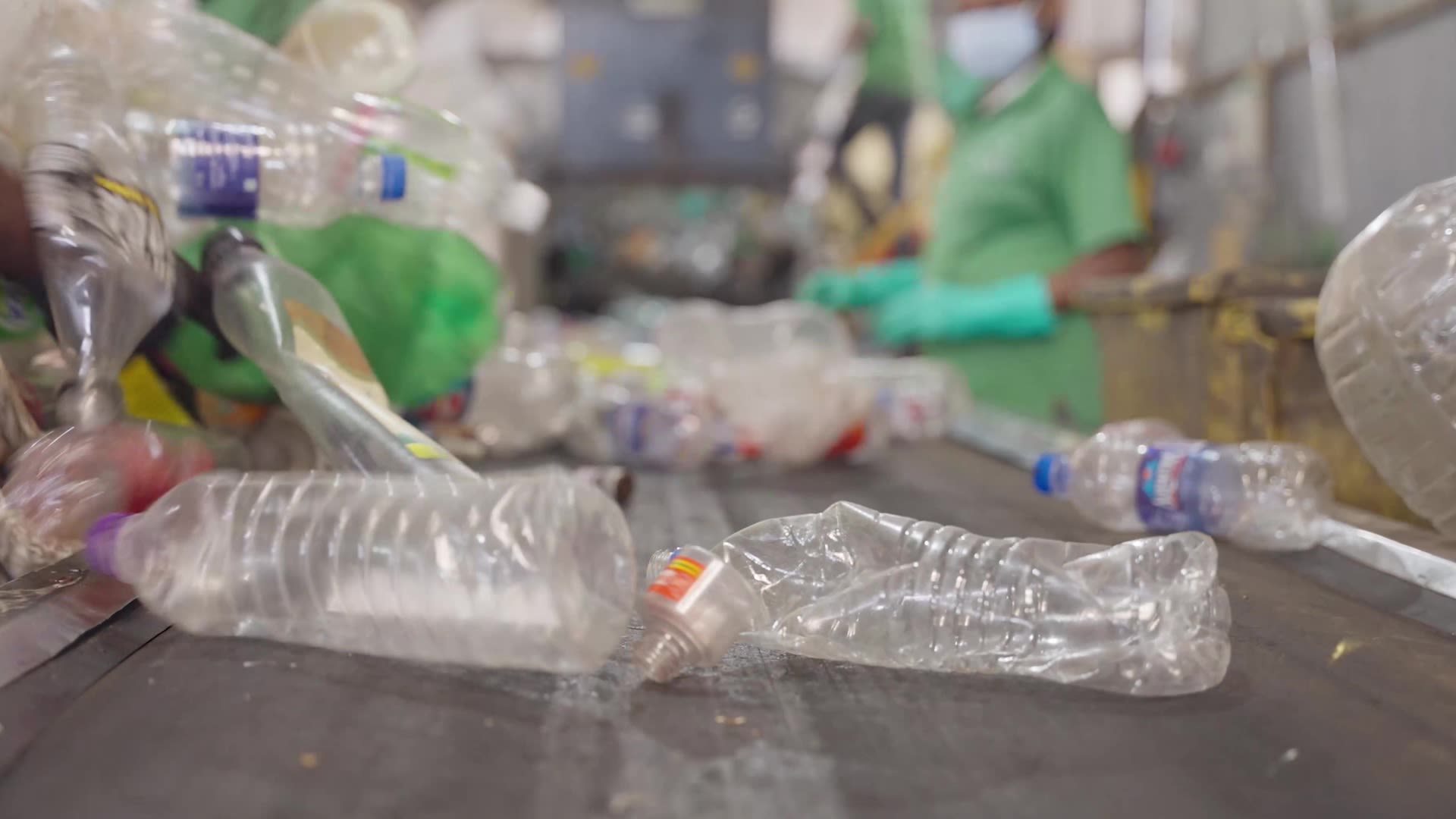
Kumudha is used to early starts. Formerly a waste picker, she would begin her day at 5 a.m., sorting through garbage in the streets and landfills of south Bengaluru, the largest city in Karnataka state, southern India, in the hope of recovering items that could be sold on to neighborhood scrap shops and recycling facilities.
The work was long and exhausting and she would often face harassment and discrimination. “If we went to collect the waste, the police would accuse us of theft. People would shoo us away saying, ‘they are waste pickers; they are unhygienic,’” she said.
Kumudha, formerly a`waste picker, now runs her own dry-waste collection center with the support of social impact organization Hasiru Dala.
There are an estimated 35,000 waste pickers working informally in Bengaluru, and up to 4 million across India. The majority have low levels of education and come from the lower castes of Indian society. “These are traditionally people who have come from outside the city,” said Akshay Soni from The/Nudge Institute, an Indian nonprofit focused on poverty alleviation and serving as the backbone of the Saamuhika Shakti project, which aims to lift waste pickers out of poverty. “As countries urbanize, you move from rural India to urban India, you come into a city, but you're not skillful enough … hence, waste picking becomes a gateway occupation,” he said.
Every day in Bengaluru, waste pickers sift over 1,000 tons of recyclable material, which amounts to around a third of the city’s generated waste. But despite their invaluable role, they remain a marginalized and impoverished group, earning an average income of about 150-200 Indian rupees a day — the equivalent of just $2.71-$3.62.
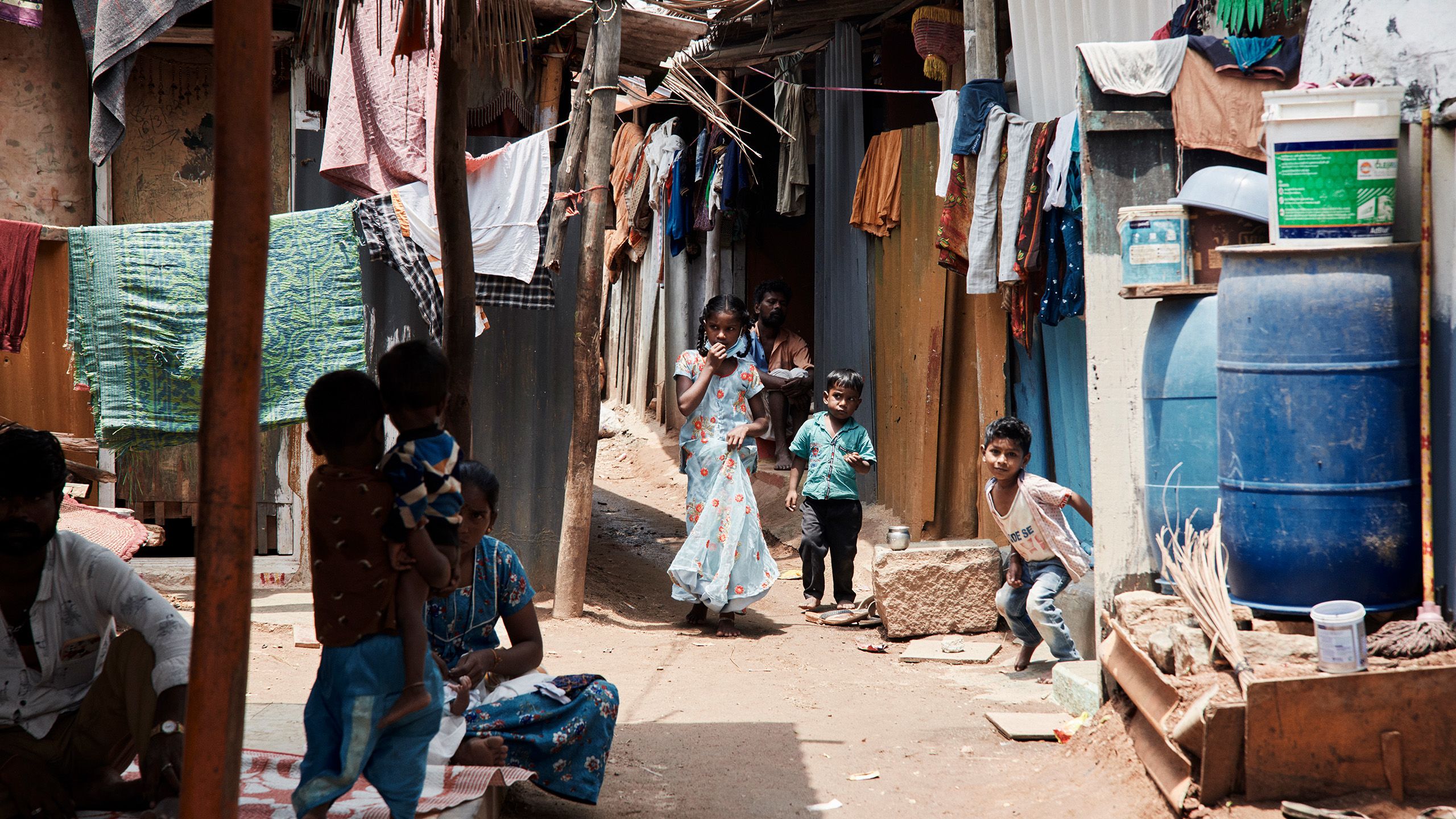
Waste pickers and the circular economy
India’s urban waste management system is split into two parts: the formal system of door-to-door collection services is funded, regulated, and managed by the local government; while the informal system, which focuses on inorganic waste, is managed by street waste collectors, itinerant buyers, and waste sorters.
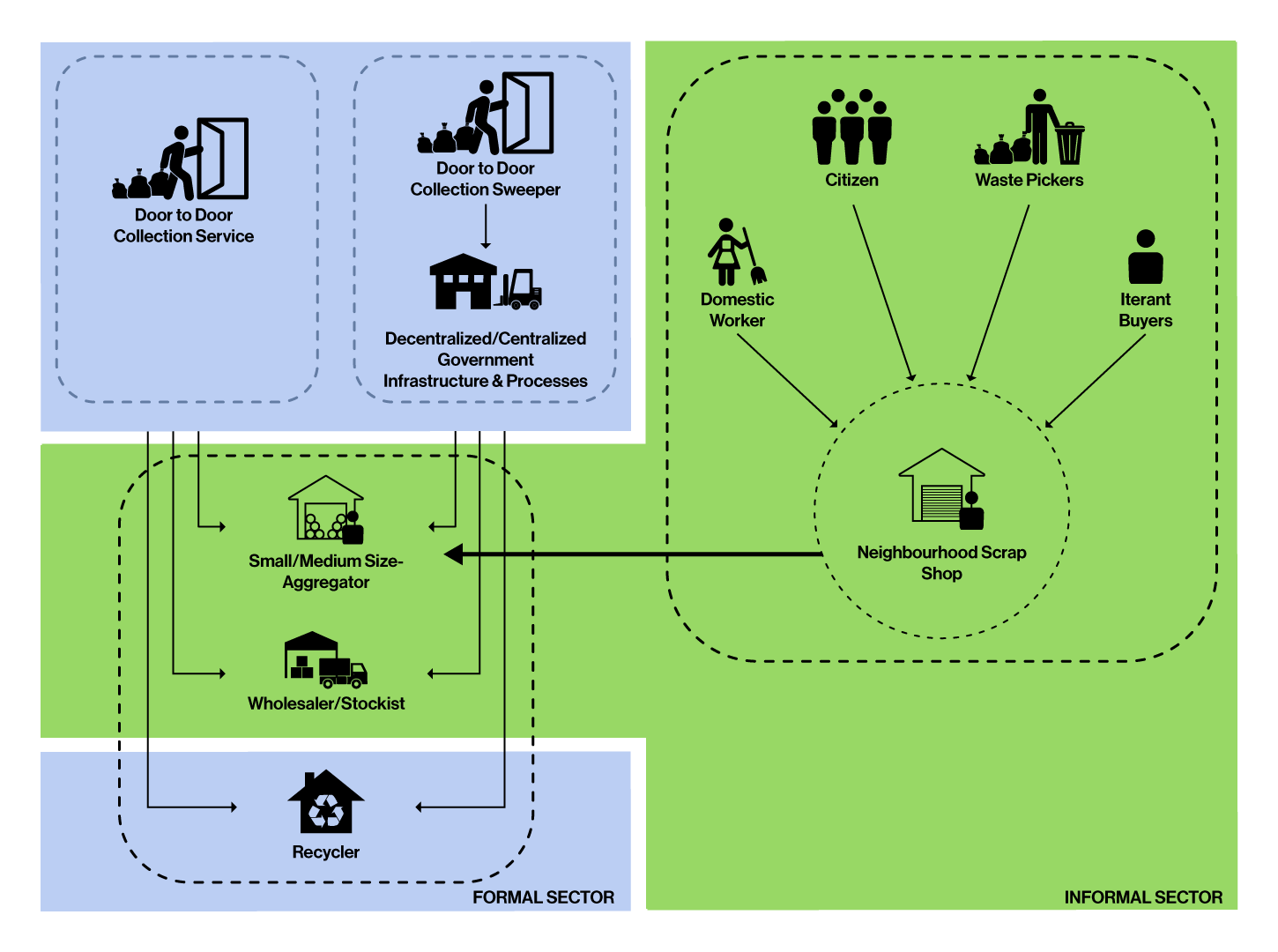
The waste management ecosystem in India. Source: Hasiru Dala
The waste management ecosystem in India. Source: Hasiru Dala
Waste pickers are the driving force behind recycling in India, a country that generates 62 million tons of waste annually but only processes and treats about 19% of it due to a shortage of recycling technologies and infrastructure. “We don't have the capital … to be able to spend on getting rid of the waste. It’s more likely that it would go directly to the landfill,” Soni said.
As well as low wages, hazardous working conditions, and discrimination, waste pickers face poor access to services such as housing, education, health care, and water and sanitation. “Because they're informal, they are often forgotten when the formal sector comes together to create solutions. This presents a risk that the solutions actually might lead to negative consequences [for the informal workers],” said Maria Bystedt, strategy lead at H&M Foundation.
Seeing these gaps, H&M Foundation launched the Saamuhika Shakti initiative in 2020. “We wanted to find a way to build a holistic program to promote inclusive circularity, one that takes both the social and environmental perspectives in mind … We decided to focus on India because it's a hub for textile production,” Bystedt said.
Waste pickers identified the following as the key root causes of their poverty and marginalization:
Source: Saamuhika Shakti
Stigma
Thirty-one percent of the general population in Bangalore hold a strong stigma against waste pickers.
Education
Most waste pickers are either uneducated (54%) or have lower primary levels of education (20%).
Gender disparity
Forty-nine percent of waste pickers are women; they earn up to 33% less for the same work and face domestic violence.
Limited upward mobility
Sixty-three percent are not aware of alternative jobs; 30% do not have voter cards and 80% do not have ration cards.
Low Income
Waste pickers earn an average daily income of 300-500 Rs. Only 5% of this community is linked to a formal financial institution.
Collective impact for systems-level change
With so many interlinked challenges involved, a holistic, systems-level approach was necessary. With this in mind the project follows the “collective impact” method, which differs from the traditional nonprofit model by bringing in multiple partners and joining up expertise.
“Collective impact offers the best of both worlds, where you bring together a group of specialists to solve [problems] for a single community,” Soni said. This means that solutions are more likely to lead to real long-term change, he explained.
Akshay Soni, executive director of Saamuhika Shakti, explains what the collective impact method is and why it's an effective method for addressing the challenges faced by waste pickers.
As collective impact is a relatively new way of working, at least in India, building trust among the different partners has been the biggest challenge, Soni said.
The/Nudge Institute, as the “independent backbone,” fills a crucial strategic role in fostering collaboration according to each partner’s particular strengths, while not playing an implementing role itself. “If you give more power to one partner at the table, sooner or later that partner begins to drive the vision,” Soni explained. “A backbone’s job is to ensure that everyone's got an equal stake at the table, everyone's doing their job and pulling towards the same vision of collaborating with each other.”
Four years into the project, collaboration has deepened significantly, Bystedt said, adding that partners now not only work on activities together but also share knowledge, resources and infrastructure.
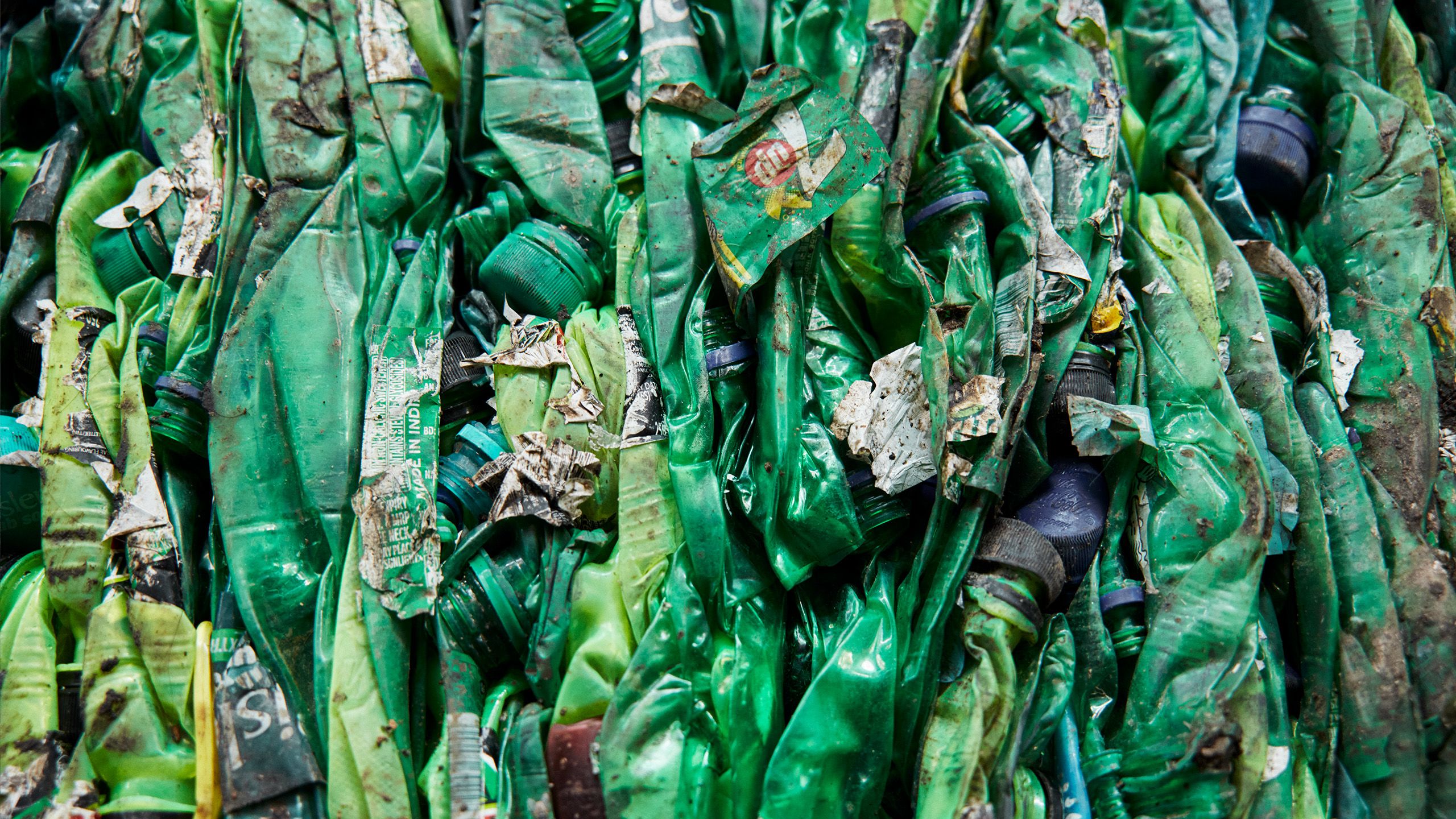
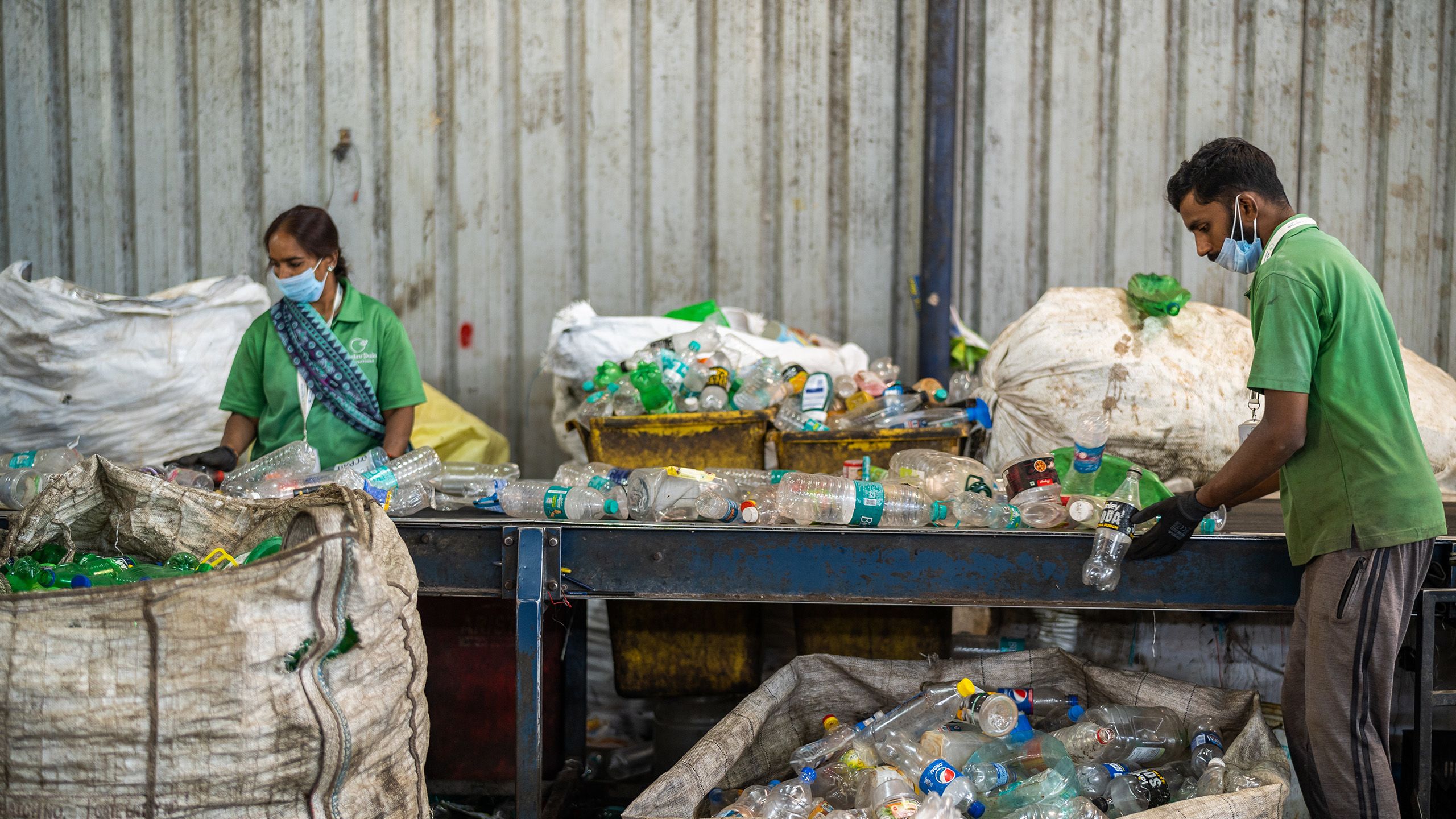
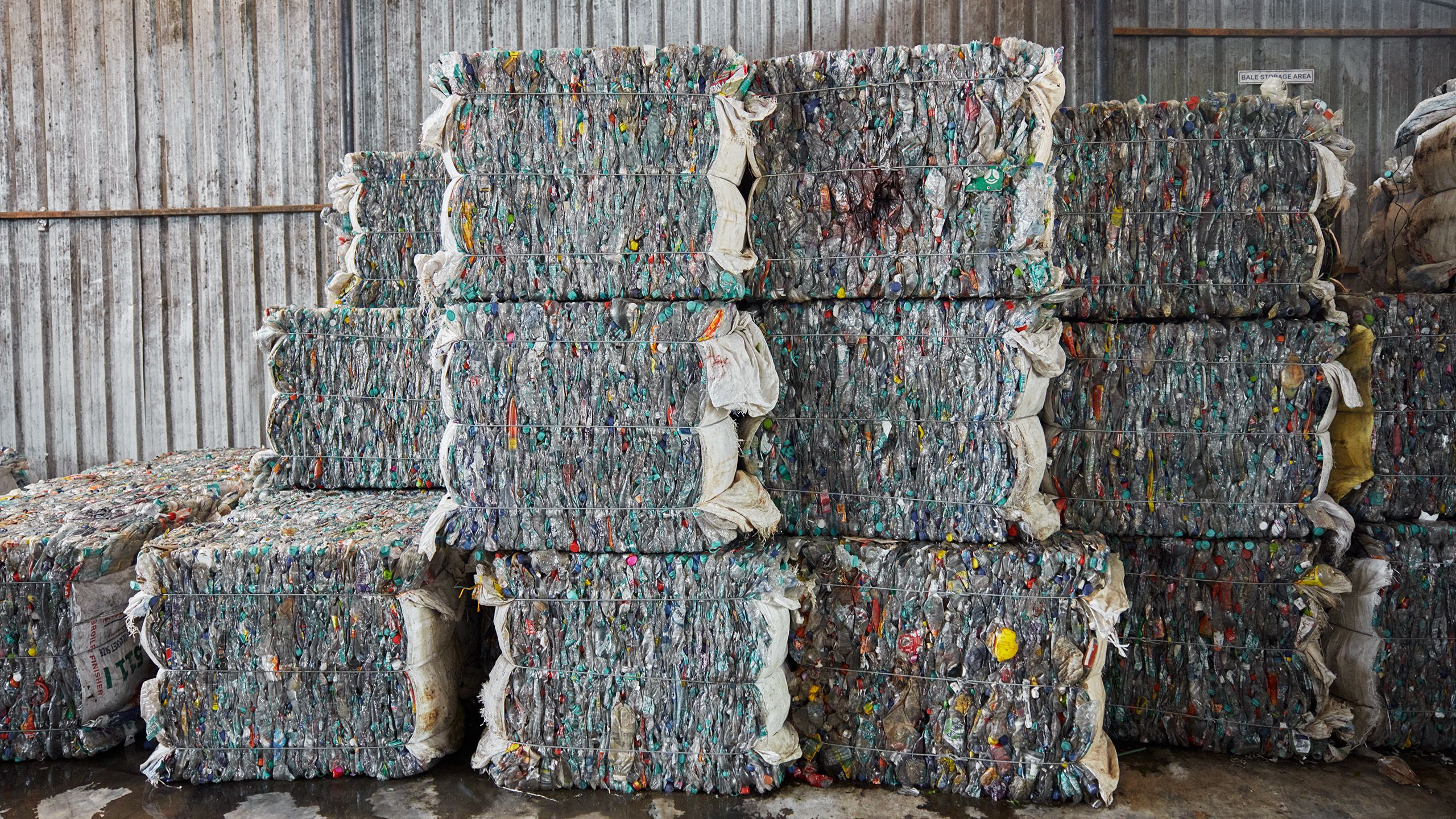
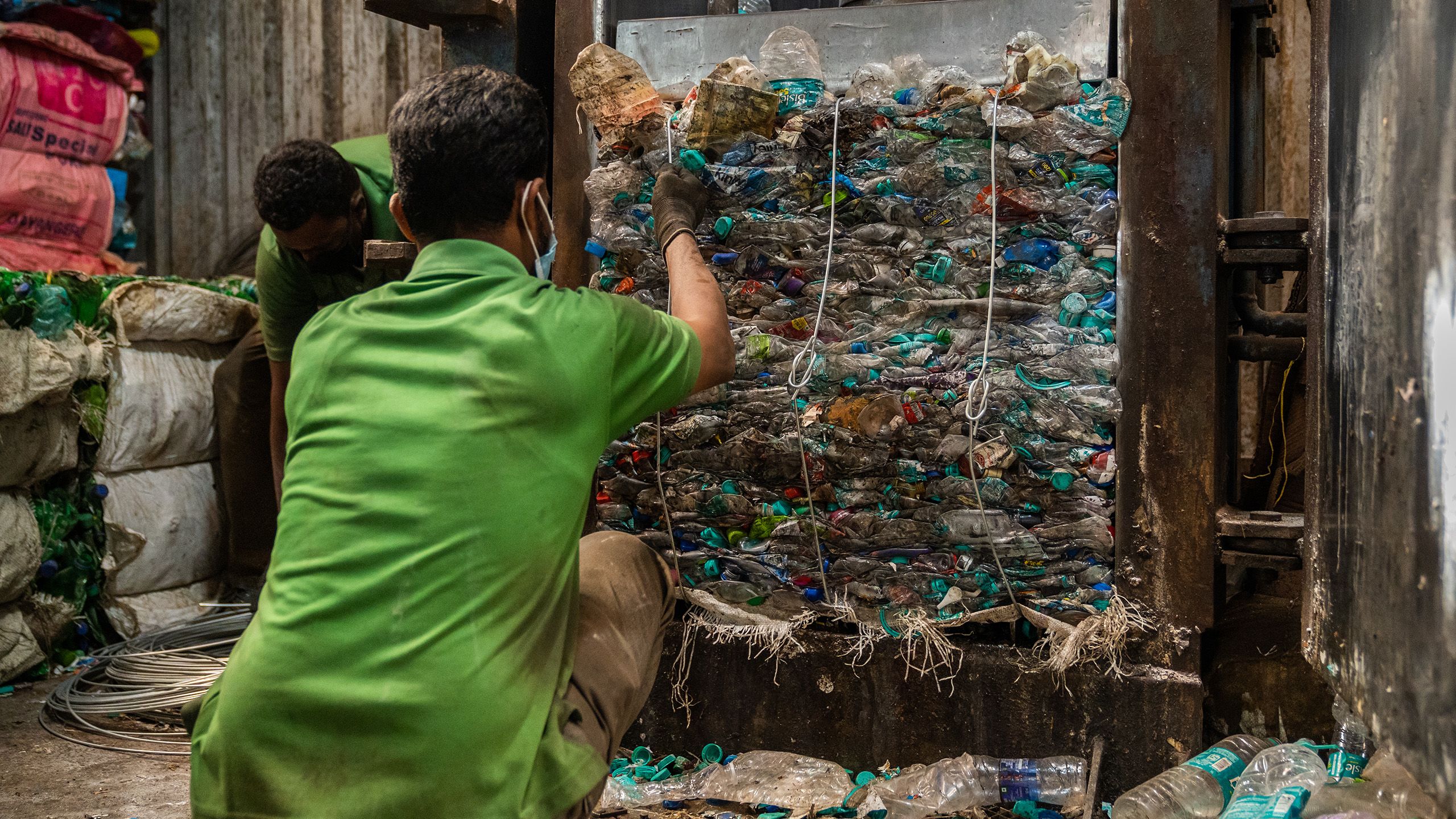

Plastic bottles being sorted at a dry waste collection center in Bengaluru. Photo: H&M Foundation/Saamuhika Shakti
Plastic bottles being sorted at a dry waste collection center in Bengaluru. Photo: H&M Foundation/Saamuhika Shakti

Plastic bottles being sorted at a dry waste collection center in Bengaluru. Photo: H&M Foundation/Saamuhika Shakti
Plastic bottles being sorted at a dry waste collection center in Bengaluru. Photo: H&M Foundation/Saamuhika Shakti

Plastic bottles being sorted at a dry waste collection center in Bengaluru. Photo: H&M Foundation/Saamuhika Shakti
Plastic bottles being sorted at a dry waste collection center in Bengaluru. Photo: H&M Foundation/Saamuhika Shakti
Since 2017, Kumudha has run her own dry-waste collection center — where inorganic waste is sorted, graded, and later sent off for recycling — with the support of social impact organization Hasiru Dala, another partner of the initiative.
Through CARE, yet another partner of Saamuhika Shakti, Kumudha and the women who work at her center have learned basic financial literacy skills such as how to open a bank account, and the women have formed a self-help group that offers loans to group members.
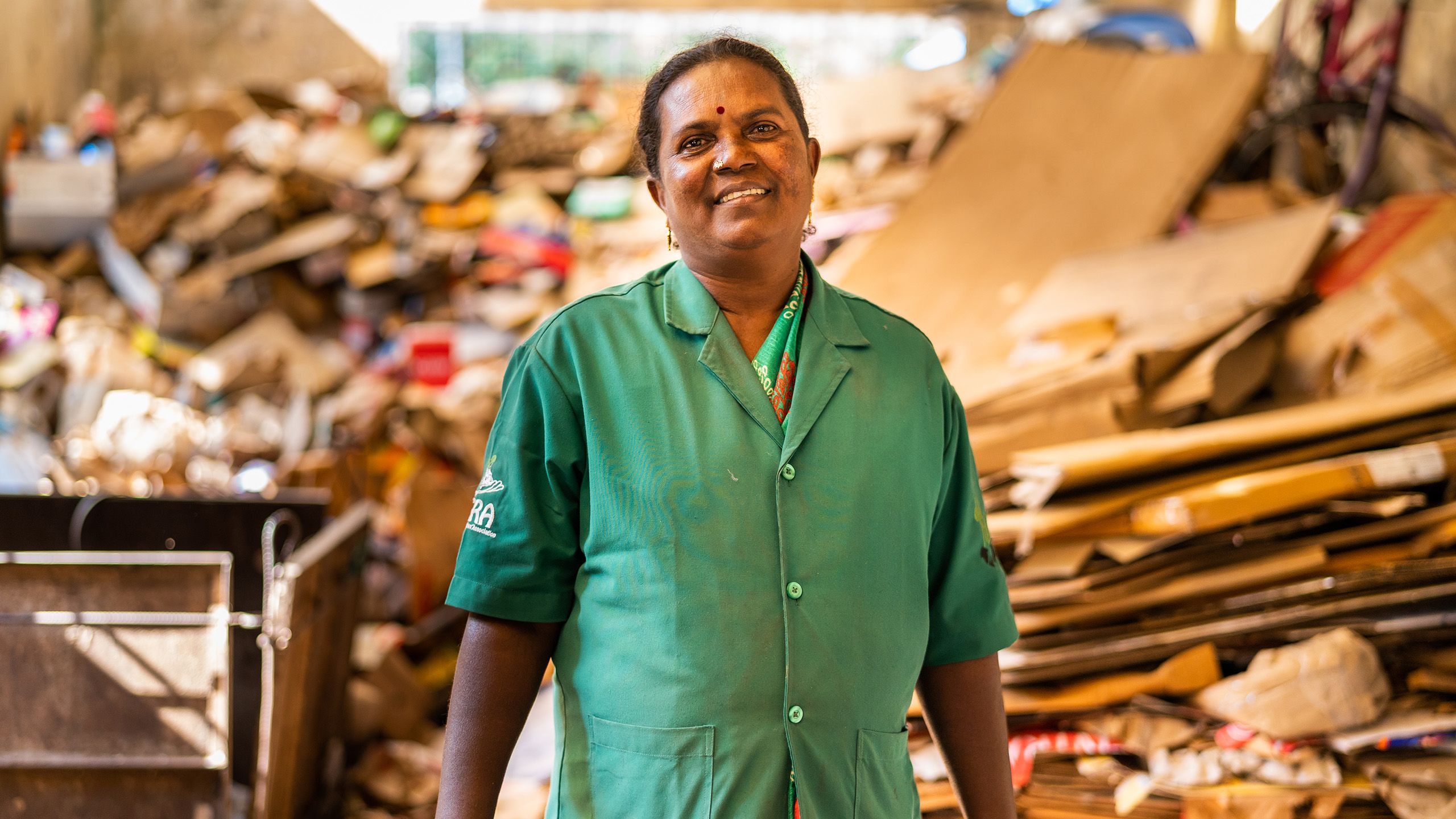
Kumudha, formerly a waste picker, now runs her own dry-waste collection center. Photo: H&M Foundation/Saamuhika Shakti
Kumudha, formerly a waste picker, now runs her own dry-waste collection center. Photo: H&M Foundation/Saamuhika Shakti
With the help of Hasiru Dala and WaterAid, the group was able to apply for a bank loan and build a larger center with a bathroom, as previously the women had to walk for a kilometer to find one.
Another Saamuhika Shakti partner, BBC Media Action, is using social and behavior change communication to change perceptions about the role of waste pickers.
BBC Media Action India created the Happy Number song, aimed at changing how waste pickers are perceived by showcasing their work and skills.
Kumudha said she has noticed an improvement in the way she’s treated by the general public. “They identify our good work; they see us as their fellow humans. People who were not respecting us and were moving away after seeing us now call us and offer us coffee and tea,” she said.
Putting communities at the heart of program design
Community-centered program design has been a key part of Saamuhika Shakti since its inception, Bystedt said. “We don't think that the design of programs should be led by the funders. It should be designed with and by the primary actors … the people who have lived experience of a social problem.”
H&M Foundation's Maria Bystedt is hoping that Saamuhika Shakti can inspire the donor community to support cross-sectoral collaborations that take a systems change approach.
Saamuhika Shakti has approached this in several ways, she explained. One way is through monthly community forums, called “Namma Jagali” — which means “my area” in Kannada, the local language. These gatherings are attended by community members, including waste pickers, to share feedback and discuss any problems. “In the nonprofit world, sustainability has to be about what portion of your intervention will stay embedded in the community after you leave. The community needs to have skin in the game,” Soni said.
Other aspects include designating community resource persons — community members who become part of the partners’ project teams. “They constantly make sure that they're feeding into the community and consulting them and bringing them on board all the way,” Bystedt said.
Community-centeredness also helps to ensure the initiative doesn’t stray from its original purpose of serving waste pickers, Soni said. “That's the true customer, not the person who's paying the money,” he said.
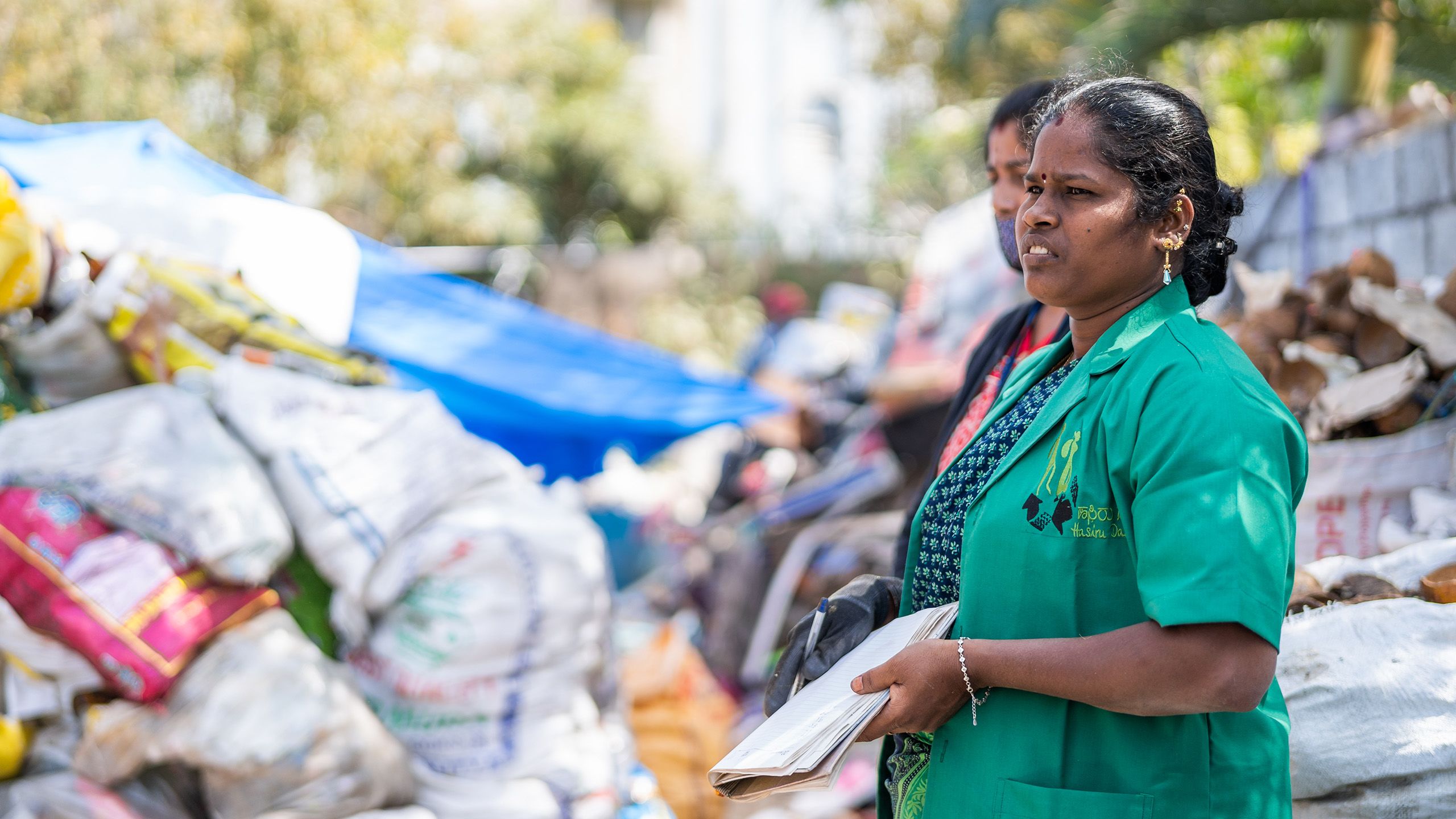
Building inclusive circular value chains
The concept of inclusive circularity — not only building a circular economy but also ensuring that these developments are done in a fair and equitable way — is central to the project, Bystedt said.
Saamuhika Shakti has so far also supported 10 startups working in the waste management space across India through its accelerator program, run by innovation platform and partner Social Alpha.
Ashaya, part of the 2022 cohort, has developed technology that can process multilayered plastic packaging — a notoriously difficult-to-recycle material that’s used for potato chips packets and other food wrappers — and turn it into commercial products such as sunglasses, while employing and upskilling waste pickers.
Anish Malpani, founder of startup Ashaya, explains how his company aims to increase the value of waste while employing and upskilling waste pickers.
“What's really unique about our model is that 50% to 75% of the process can be done by waste pickers who work right alongside engineers and managers and scientists to make this happen,” said Anish Malpani, founder of Ashaya. “We formalize them into our supply chain, giving them dignified labor, and their incomes have increased twofold,” he said.
With the fashion industry facing pressure to move from a linear to circular economy, Saamuhika Shakti’s inclusive circularity approach has also garnered attention from international brands.
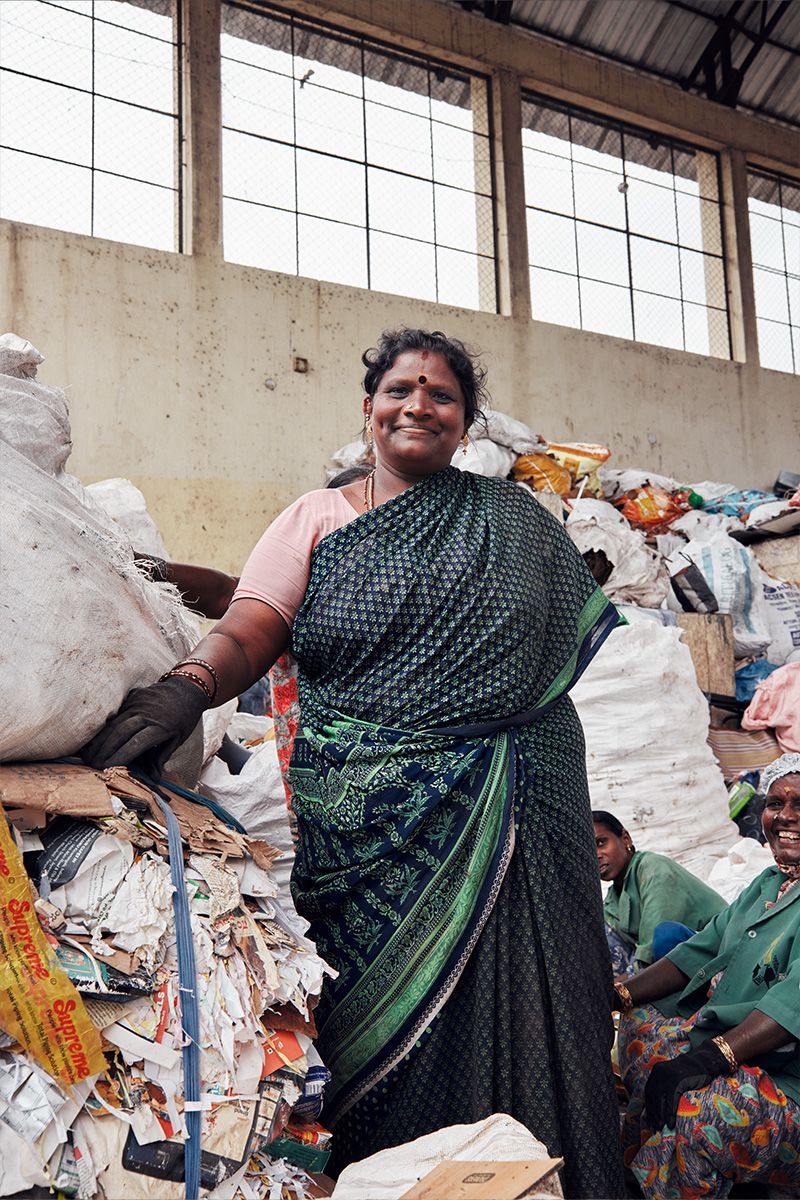
Nadiya, a dry-waste collection center operator in Bengaluru. Photo: H&M Foundation/Saamuhika Shakti
H&M Group now buys buttons partly made from recycled PET bottles sourced by waste pickers for all its garments made in India, as part of a stand-alone business partnership between H&M Group and Hasiru Dala Innovations, a sister organization of Saamuhika Shakti's partner Hasiru Dala. Two other international brands have also shown interest, Soni said. “It's a stepping stone, and hopefully people will start thinking about the need to move further than circularity,” he added.

Nadiya, a dry-waste collection center operator in Bengaluru. Photo: H&M Foundation/Saamuhika Shakti
Nadiya, a dry-waste collection center operator in Bengaluru. Photo: H&M Foundation/Saamuhika Shakti
“We don't think that the design of programs should be led by the funders. It should be designed with and by the primary actors … the people who have lived experience of a social problem.”
— Maria Bystedt, strategy lead, H&M Foundation
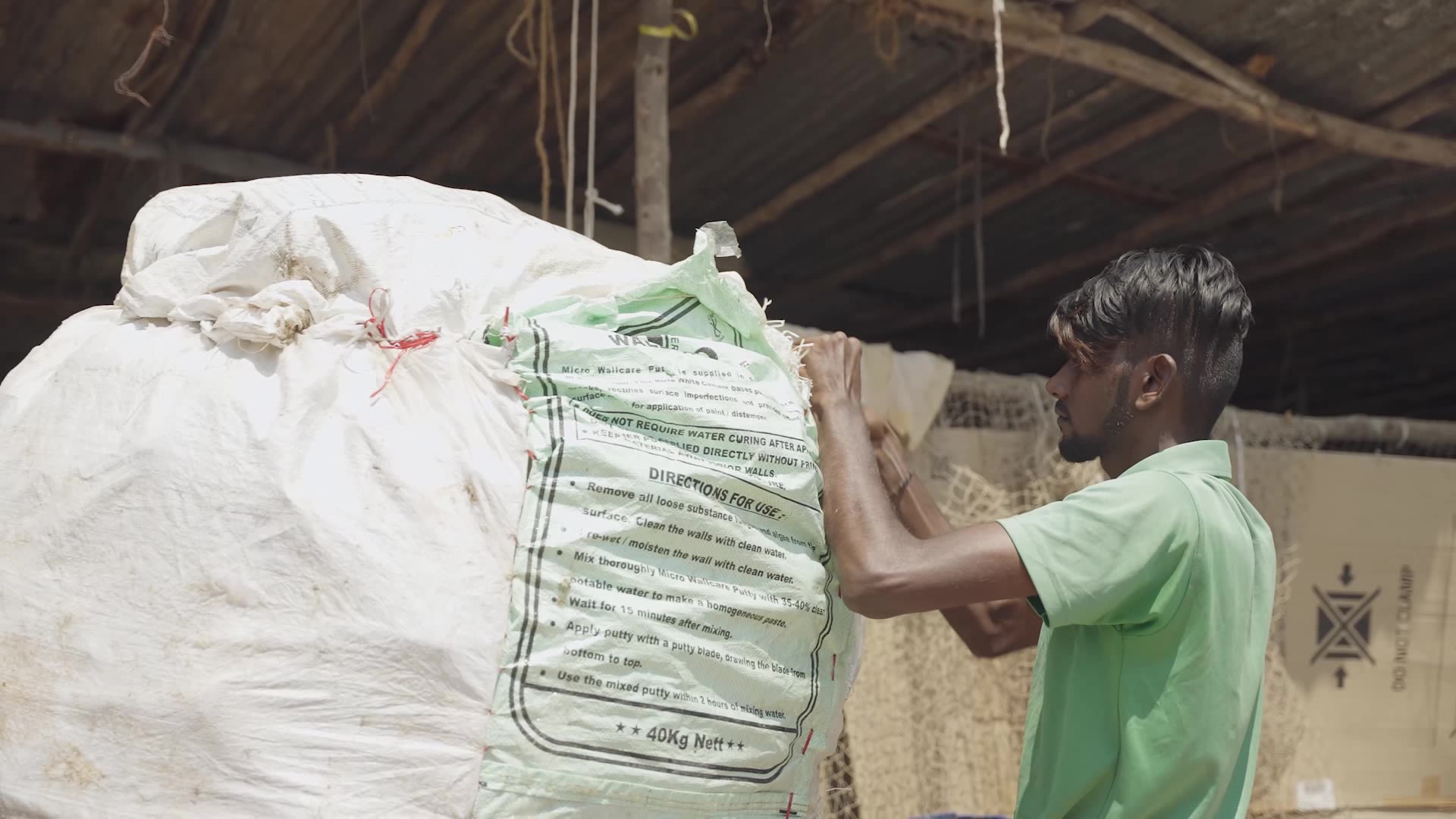
Looking ahead
The Saamuhika Shakti partners are currently working on co-creating the second phase of the project, which will run for a further three years, explained Bystedt, and will expand on the initiative’s current work with textile waste.
Historically, there has been little interest in textile recycling, said Bystedt, but this is shifting as the fashion industry comes under greater scrutiny. “We see a huge opportunity here to upskill waste pickers to become textile waste entrepreneurs, or sorters in the sector, and then linking them to markets,” she said.
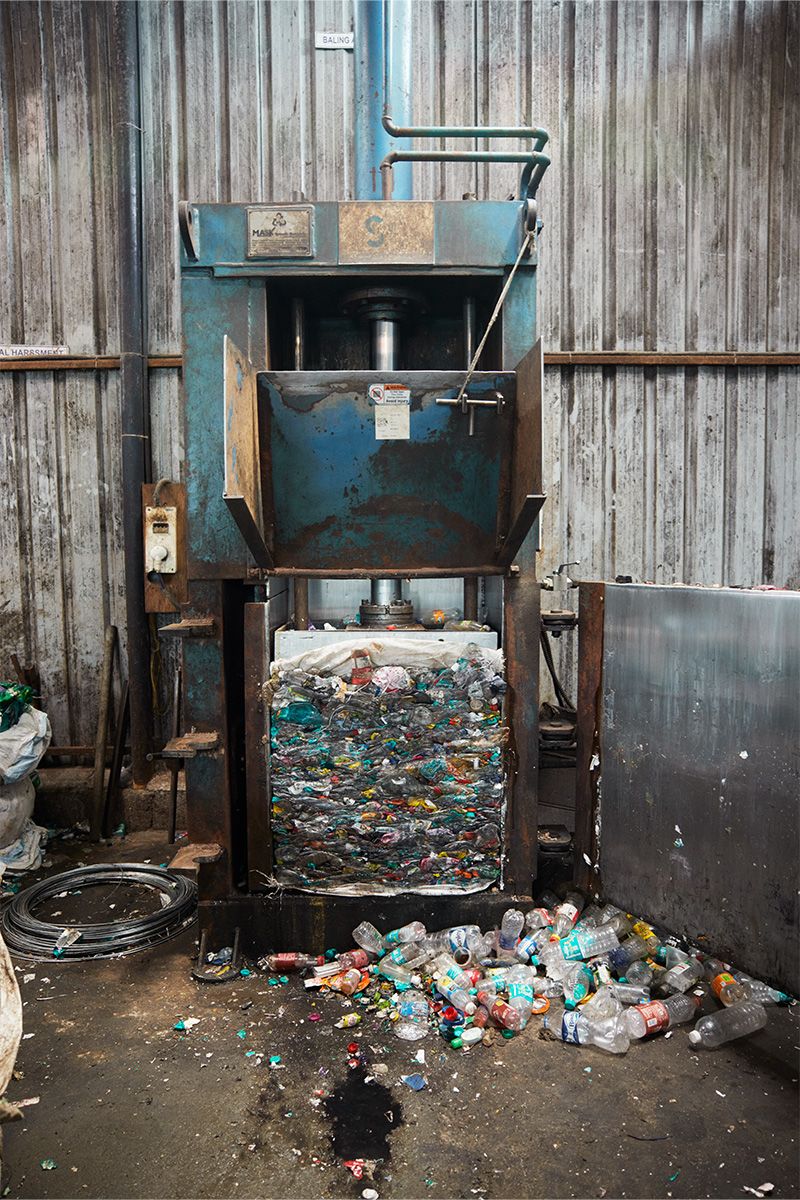
Photo source: H&M Foundation/Saamuhika Shakti
Bystedt is hoping that Saamuhika Shakti can inspire the donor community to support cross-sectoral collaborations that take a systems change approach, and to fund community-driven initiatives directly.
Funders should focus not only on direct implementation but also on activities like evaluation and learning, community organizing, and movement building. “We think that good funders act as catalyzers to create relational partnerships, to help the partners to grow, to fund with more long-term funding,” Bystedt said. “Be patient, because social change doesn't happen in the short term.”

Photo source: H&M Foundation/Saamuhika Shakti
Photo source: H&M Foundation/Saamuhika Shakti
Photos: H&M Foundation / Saamuhika Shakti
SPONSORED BY

